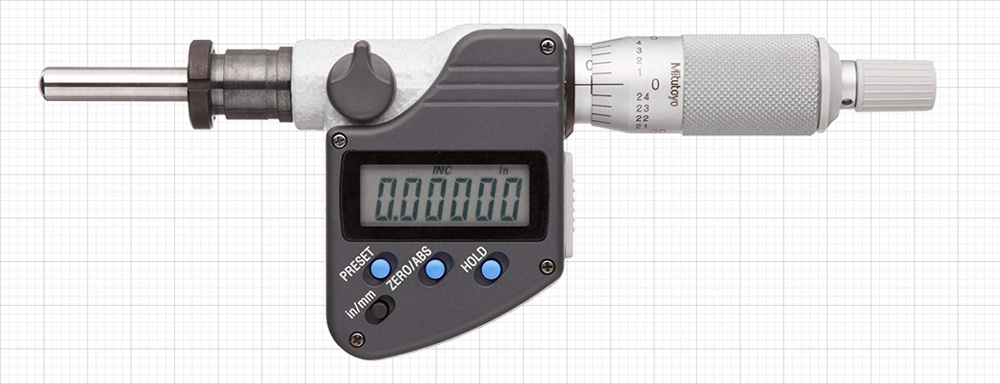A micrometer head is a precision measurement tool that is built to be mounted on other measurement instruments or precision fixtures. Micrometer heads are used for a range of reasons including measurement, positioning, and adjustment and used in conjunction with a variety of tools including laser instruments, manipulators, measurement jigs, lathes, and other machine tools. Using one fixed surface and one adjustable surface, micrometer heads are broadly used to measure length and for precise positioning. These handy tools are growing in popularity and application, and offer an incredible degree of precision for accurate measurement. We will highlight the main parts and purposes of a micrometer head.
In general, micrometer heads can be built into a measurement device, or mounted on separately. The readout mechanism on a micrometer head varies and can be a digit counter, a Vernier scale, or a digital screen. A few of the features that are important to consider when selecting a micrometer head include: measurement range, graduations, stem, spindle face, resolution, and the thimble diameter. The stem can be plain type or clamp nut type. A plain type stem can be used in a wider range of applications and allows for small proportional adjustments in the axial direction, whereas a clamp nut type stem is best for fast and secure clamping, and does not require adhesive fixing. The measuring face on a micrometer head can be flat, spherical, or anti-rotation. The flat face is the most common, while a spherical face is best when the micrometer head is being applied as a feed device. When you need to avoid any twisting actions during measurement, the anti-rotation face is recommended.
The measuring range on a micrometer head determines the measurement stroke that you will be able to complete. For smaller strokes, a 25mm stroke design is likely appropriate, while for longer strokes, you will need a stoke equal to or greater than 50mm. The thimble diameter on a micrometer head is important regarding the fineness of positioning. Smaller thimbles are best for quick action positioning while larger thimbles are ideal when you need finer positioning. Finally, micrometer heads are designed with normal, reverse, or bidirectional graduation styles. Normal graduation increments are the standard option and the size increases as the spindle retracts into the body. Reverse graduation style micrometer heads are built similarly, but instead the reading size increases as the spindle advances out of the body. The third graduation style, bidirectional graduations, can be used to complete measurement in either direction with different colored numbers for forward and backward operation.
In general, micrometer heads are used as a way to position a tool precisely. Alternatively, they may also be used within an automatic feed system to limit switches in the halting process or to actuate kick-out mechanism. When precise adjustments and movements are necessary, having a micrometer head is important for using special gauges, machine tools, fixtures, electronic equipment, and other precision measurement equipment. Specially designed micrometer heads may be better used when working with specialized equipment such as wavemeters. At Higher Precision, we are available to help you determine the specific qualities you need for your micrometer head. Micrometer heads are growing in popularity and any precision measurement toolkit is incomplete without them.
Shop our our selection of Micrometer Heads

